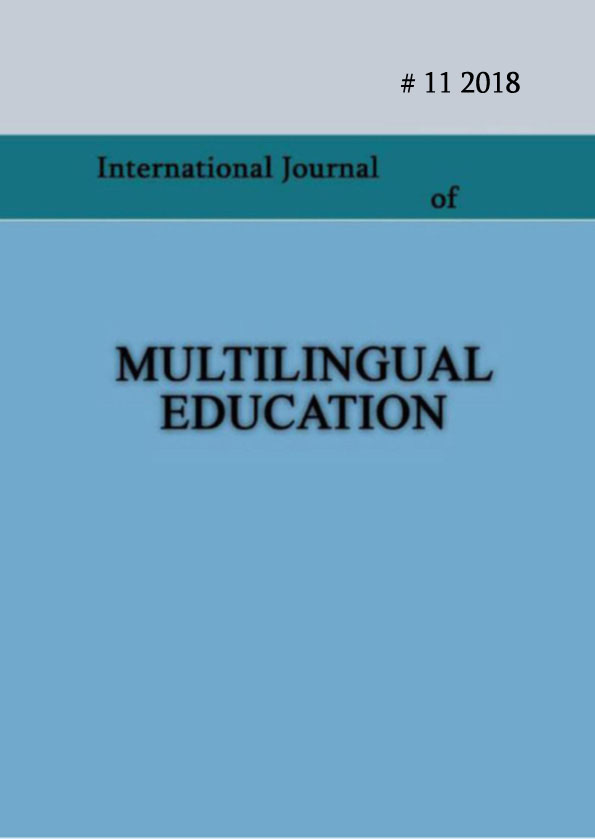The main issues connected to teaching the Abkhazian and Ossetian languages between the 20s and 50s of the XX century
Keywords:
Abkhazian language, Ossetian language, bilingual education, Soviet Union, Nikolas Marr theoryAbstract
The development of the Abkhazian and Ossetian languages between the 20s and 50s of the 20th century is of vital importance from linguistic, political, ideological, and didactic points of view. Noteworthy is the fact that in this period, the Abkhaz and Ossetian languages were evolving through the use of alphabets of different languages.
In particular, it should be noted that from the beginning of the 20th century the Abkhaz and Ossetian languages were developing on the basis of the Russian alphabet. Afterwards, the written Ossetian (1923) and Abkhazian languages (1926) were based on the Latin alphabet, which is connected to the activities of Nicholas Marr. From 1938 there were more changes to the alphabet for both languages and the Russian alphabet was used for the Ossetian language in North Ossetia whereas the alphabets for the Ossetian and Abkhazian languages in South Ossetia and Abkhazia were based on the Georgian alphabet. In 1954, the Russian alphabet replaced the Georgian alphabet in South Ossetia and Abkhazia.
Recognition of Nicolas Marr’s “Iapetus theory” in the Soviet Union led to the first changes and Latinization of the Ossetian and Abkhazian alphabets. It should be noted that from the 20s of the 20th century, the writing system of Turkic languages of Central Asian countries was also based on the Latin script.
The alphabet change is a complicated and painful issue that reflected on the educational process of Abkhazian and Ossetian languages, as well as on the literature development on these languages. The paper deals with the philological, political and pedagogical aspects of the above- mentioned issues.
References
Abaev, 1949 - Абаев В.И., 1949. Осетинский Язык и фольклор, М. – Л., 1949.
Abkhazian Alphabet, 1892 - Абхазская азбука. 1892 Главнейшие молит вы и заповеды на абхазском и церковно-славянском языках. Тифлис.
Akhvlediani, 1960 - Ахвледиани Г. С., 1960. Сборник избранных работ по осетинскому языку, Тбилиси:
«Тбилисский Государственный Университет».
Andronikashvili, 1996 - Andronikashvili Mzia., Resources of Iranian-Georgian linguistic interaction. II. Tbilisi, 1996.
Bepievi, 2008) - Bepievi Naira., The issue of Ossetians education, Materials of the International Scientific Conference of the National Center of Manuscripts, Tbilisi, 2008.
Bghazhba, 1987 - Bghazhba Kh., Book of Works I. Sokhumi. 1987.
Bleichsteiner -(1918) Bleichsteiner Robert., 1918. Überblick über kaukasische Völker und Sprachen; in: Berichte des Forschungsinstituts für Osten und Orient. Bd. 2. 66-85. Vienna.
Bzarov, 1999 - Бзаров P.C., Развитие национального образования в Северной Осетии, Мах дуг, 1999, №7.
Chichinadze, 1913 - Chichinadze Z. Ossetian History, Tbilisi, 1913.
Collection of Legal Acts of the Democratic Republic of Georgia 1918-1921, “იIverta Mkare”., Tbilisi, 1990. Collection of Legal Acts of the Democratic Republic of Georgia, 1990)
Gabeev, 1940 - Габеев А. Я., Владикавказское осетинское духовное училище, Ученые записки Северо-Осетинского государственного педагогического института. Т. Орджоникидзе, 1940.
Gabunia, 2017 - Gabunia Kakha., Aspects of the Language of Minority Language in the Post-Soviet Georgia: "Georgian-Ossetian Relations - History and Modernity",
Gagloev, Tshibirov, 1982 - Гаглойти Ю. С. Чибиров Л. А, 1982. Юго-осетинский
Published
How to Cite
Issue
Section
License
Copyright (c) 2018 Nino Popiashvili

This work is licensed under a Creative Commons Attribution-NonCommercial 4.0 International License.
Copyright (c) - Authors who publish with this journal agree to the following terms: Authors retain copyright and grant the journal the right of first publication with the work simultaneously licensed under a Creative Commons Attribution-Noncommercial 4.0 International License, which allows others to share the work with an acknowledgement of the work's authorship and initial publication in this journal. Authors are permitted and encouraged to post their work online (e.g., in institutional repositories or on their personal website) prior to and during the submission process, as it can lead to productive exchanges, as well as earlier and greater citation of published work (see The Effect of Open Access). Authors may enter into separate, additional contractual arrangements for the non-exclusive distribution of the journal's published version of the work (e.g., post it to a repository or publish it in a book), with an acknowledgement of its initial publication in this journal.

